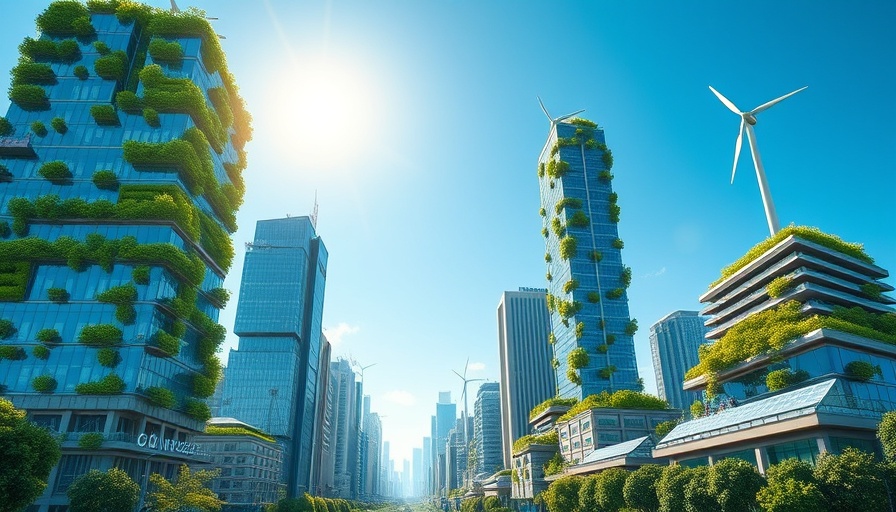
GenZero's Path to a Sustainable Future
In a crucial stride towards combating climate change, GenZero, a Temasek-owned investor focusing on sustainability, has announced significant progress. Since its inception in 2022, the fund has successfully cut down 3 million tonnes of carbon dioxide equivalent (MtCO2e), nearing the halfway mark of its target to abate 7 MtCO2e by 2028. This achievement, outlined in their first sustainability report, is indicative of GenZero’s commitment to measurable climate action.
Setting Targets for Climate Impact
Unlike many other funds which primarily emphasize net-zero targets, GenZero has initiated a noteworthy approach by publicly setting absolute targets for emissions reductions. Sofia Galanek, a senior associate of GenZero, highlighted that while numerous climate funds exist, very few have distinguished themselves by focusing on the concrete achievement of climate impact. GenZero's transparency and the clear declaration of targets create a new standard in climate finance, aiming to enhance industry accountability regarding investors’ impact on the climate.
Investment Travel Across Southeast Asia
Despite the ambitious measures outlined in their report, GenZero has faced challenges, especially concerning investments in technologies with delayed crediting periods. Their investments span various aspects of sustainable development, notably sustainable rice farming in Vietnam and Indonesia through Rize, and coal-to-clean energy transition projects in the Philippines. This regional focus aims to spur eco-friendly practices, showcasing GenZero’s commitment to sustainable agriculture and renewable energy sources.
The Importance of Standardized Methodologies
A significant concern raised in GenZero’s report revolves around the lack of standardized methodologies for measuring climate impact. Investors often run the risk of oversimplifying complex value chains, which may lead to misrepresentations of the true drivers of impact. By addressing this gap, GenZero seeks to refine the understanding of climate solutions’ efficacy, emphasizing the need for precise metrics that accurately reflect their contributions to sustainability.
Future Investments and Strategic Directions
While GenZero’s current focus centers on direct emissions reductions, it also recognizes the long-term significance of nascent climate technologies that, while not yielding immediate results, have the potential to drive decarbonization in the future. Investments in companies such as BeZero, which evaluates carbon credit ratings, highlight an emerging trend towards supporting a broader ecosystem of sustainable business practices. Such strategic directions enhance the prospects for various sustainable solutions, positioning GenZero as a proactive player in the fight against climate change.
Community and Global Perspectives on Environmental Impact
The constructive initiatives taken by GenZero align well with the broader narrative of sustainability, promoting conscious living and eco-friendly practices. Their emphasis on ethical sourcing and environmentally friendly investments reflects a growing awareness among investors and consumers alike regarding the importance of reducing one’s carbon footprint. As these practices gain traction, they also enhance community-driven environmental stewardship, driving collective action towards sustainability.
The Road Ahead for GenZero
Looking forward, GenZero remains dedicated to expanding its portfolio with an emphasis on sustainability initiatives, including renewable energy and circular economy solutions. Achieving their targets will require continued innovation in sustainable practices, collaborative partnerships, and unwavering commitment to educating stakeholders on the importance of reducing waste and advocating for ethical consumerism. This concerted effort stands to not only mitigate environmental impact but also foster a thriving, healthy planet for future generations.
Your Role in the Sustainable Future
As we continue to see the effects of climate change, it becomes vital for everyone to adopt sustainable habits. Consider how your personal choices, from using eco-friendly products to minimizing waste, can contribute to a sustainable future. Engage in community efforts such as community gardens, ethical sourcing, and utilizing renewable energy sources to play an active role in addressing climate challenges.
The journey towards a sustainable future is ongoing, and each step taken, no matter how small, can make a significant impact. By informing ourselves and others about sustainability, we can foster stronger community connections and support the essential shift towards a green economy. Let’s work together to ensure a vibrant planet filled with life for generations to come.
 Add Row
Add Row  Add
Add 



Write A Comment